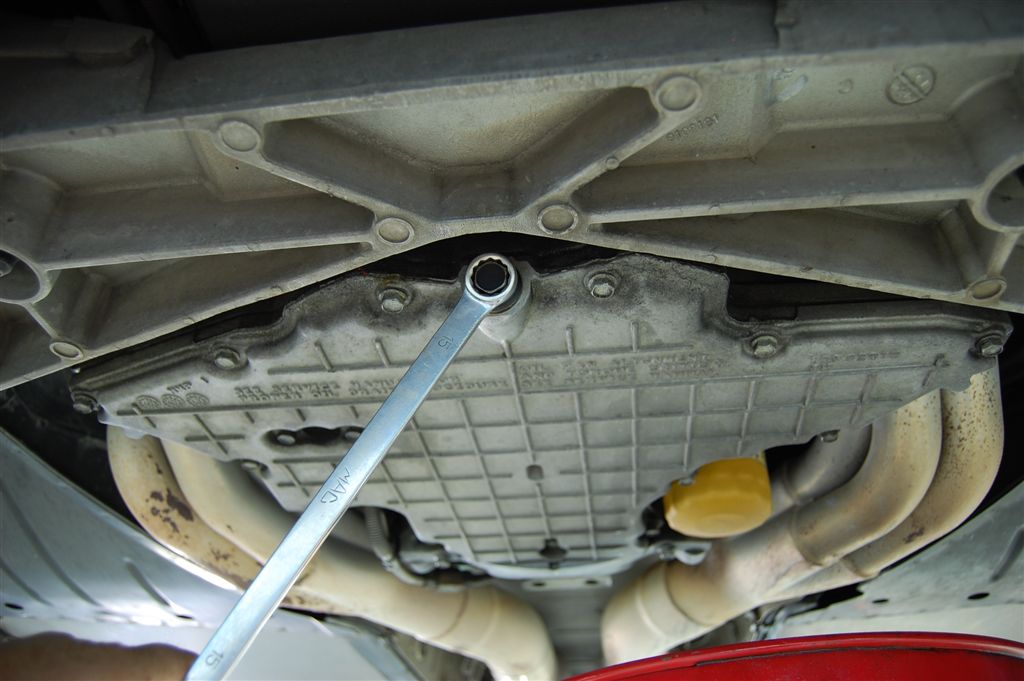Keeping your Ford running smoothly means staying on top of its maintenance. But with so many details to remember—like the right oil type and capacity, lug nut torque for your specific year, and understanding fuse box diagrams—it can get overwhelming.
What’s more, after hitting 100,000 miles, certain problems may start to appear that you should watch out for. If you want to avoid costly repairs and keep your Ford in peak condition, this guide breaks down everything you need to know by mileage and year.
Read on to get clear, easy-to-follow advice that puts you in control of your vehicle’s health.

Credit: tech.corvettecentral.com
Ford Maintenance By Mileage
Ford vehicles need regular care to stay reliable and safe. Following a maintenance schedule by mileage helps catch problems early. It keeps your car running smoothly and extends its life. This section breaks down important service tasks at key mileage points.
Routine Checks At 5,000 Miles
At 5,000 miles, basic checks ensure your Ford runs well. Change the engine oil and oil filter. Check tire pressure and tread depth. Inspect brake pads and fluid levels. Look for leaks or unusual noises. These small steps prevent bigger problems.
Service Tasks At 30,000 Miles
By 30,000 miles, more detailed service is needed. Replace the air filter and cabin filter. Inspect the battery and clean terminals. Check the coolant and transmission fluid. Rotate tires to even out wear. Test the brakes thoroughly for safety.
Major Maintenance At 60,000 Miles
At 60,000 miles, your Ford needs major tune-ups. Change spark plugs and timing belt if required. Replace the fuel filter and inspect the exhaust system. Flush the cooling system and transmission fluid. Check suspension and steering components carefully.
Inspection Points At 100,000 Miles
100,000 miles is a milestone for deep inspection. Test the battery and charging system. Replace the serpentine belt and water pump if needed. Inspect the brake system for wear and leaks. Check all hoses and seals for cracks. A detailed exam keeps your Ford safe.
Beyond 100k: What To Expect
After 100,000 miles, wear and tear increase. Watch for engine performance changes and noise. Keep up with oil changes and fluid checks often. Be ready for parts replacement like shocks or alternators. Regular inspections help avoid costly repairs later.

Credit: carleasingpeople.co.uk
Recommended Oil Types And Capacities
Choosing the right oil type and knowing the correct oil capacity is key for your Ford’s engine health. Using the proper oil keeps the engine clean and runs smoothly. It also helps avoid costly repairs. Ford models may need different oils and capacities depending on their year and engine type.
Understanding these details helps keep your Ford in top shape. Below are important points about oil types, capacity by year, and how often to change the oil.
Oil Types For Different Ford Models
Ford uses various engine oils for different models. Most modern Fords need synthetic oils. Older models often use conventional oil. Check your owner’s manual to find the right oil grade. Common types include 5W-20, 5W-30, and 10W-30. Diesel engines require specific diesel engine oils. Using the right oil type protects engine parts and improves fuel efficiency.
Engine Oil Capacity By Year
Oil capacity changes by model and production year. Smaller engines usually hold 4 to 5 quarts of oil. Larger engines may need 6 or more quarts. For example, a 2015 Ford F-150 with a V6 engine holds about 6 quarts. A 2010 Ford Focus with a 4-cylinder engine holds around 4.5 quarts. Always check the manual or under the hood for exact numbers. Overfilling or underfilling oil can cause engine damage.
Choosing Synthetic Vs Conventional Oil
Synthetic oil lasts longer and handles heat better than conventional oil. It flows smoothly and protects engine parts from wear. Conventional oil is less expensive but breaks down faster. Many Ford trucks and newer models require synthetic oil for warranty reasons. Using synthetic oil can improve engine performance and reduce sludge buildup. Choose synthetic oil if your Ford is newer or used in tough conditions.
Oil Change Intervals
Oil change frequency depends on oil type and driving habits. Synthetic oil usually lasts 7,500 to 10,000 miles. Conventional oil needs changing every 3,000 to 5,000 miles. Check your Ford’s manual for recommended intervals. Frequent short trips or heavy towing may need more frequent changes. Regular oil changes keep engines running clean and extend vehicle life.
Lug Nut Torque Specifications
Lug nut torque specifications are critical for safe wheel installation on Ford vehicles. Proper torque ensures the wheel stays secure and prevents damage to the wheel or hub. Over-tightening can strip threads or warp brake rotors. Under-tightening risks the wheel coming loose during driving. Each Ford model and year may have different torque values. Following the correct specs protects your vehicle and passengers.
Torque Values By Ford Model Year
Ford trucks and cars have varied lug nut torque requirements. For example, many Ford F-150 models need 100-120 ft-lbs of torque. Older models may require less torque, around 85-95 ft-lbs. Compact cars like the Ford Focus usually need about 80-100 ft-lbs. Always check the owner’s manual for exact values by year and model. Using the right torque prevents wheel damage and ensures safety.
Tools For Proper Lug Nut Tightening
Use a reliable torque wrench to tighten lug nuts accurately. A torque wrench measures the exact force applied. Avoid using a simple wrench or impact gun alone. These tools can easily over-tighten or under-tighten. A torque stick can also help limit force for impact guns. Calibrate your torque wrench regularly to keep measurements accurate. Correct tools reduce the risk of wheel problems later.
Safety Tips For Wheel Installation
Always tighten lug nuts in a star or crisscross pattern. This ensures even pressure and proper wheel seating. Tighten lug nuts in stages, increasing torque gradually. Never tighten one nut fully before the others. After driving 50-100 miles, recheck lug nut torque. Replace damaged or rusted lug nuts immediately. Proper installation keeps wheels secure and prevents accidents.
Fuse Box Layouts And Diagrams
The fuse box is a key part of your Ford’s electrical system. It protects circuits from damage by breaking the connection if there is an overload. Understanding the fuse box layout helps you find the right fuse quickly. This knowledge saves time and prevents electrical issues.
Ford vehicles have different fuse box designs depending on the model and year. Knowing how to read these diagrams is important. It guides you in identifying the correct fuse and maintaining your car’s electrical health.
Locating The Fuse Box
Most Ford models have fuse boxes inside the cabin and under the hood. The interior fuse box is often near the driver’s side dashboard. It can be behind a panel or cover. The engine compartment fuse box sits near the battery or firewall. Check your owner’s manual for exact locations.
Common Fuse Box Configurations
Ford fuse boxes typically come in rectangular or square shapes. They contain rows of fuses and relays. Each fuse is arranged by amperage and function. Some models have multiple fuse boxes for different systems. These configurations vary by year and vehicle type.
Identifying Fuses By Function
Fuse diagrams label each fuse with its purpose. Labels include lights, radio, wipers, and more. Colors also indicate fuse rating, such as 10A or 20A. Use the diagram to match the fuse with the problem area. This prevents replacing the wrong fuse.
Replacing And Resetting Fuses
Turn off the engine before removing a fuse. Use a fuse puller or needle-nose pliers carefully. Replace blown fuses with the same amperage rating. Resetting is not needed for fuses but may be for relays. Always check the fuse box cover for instructions.
Common Problems After 100k Miles
Reaching 100,000 miles is a big milestone for any Ford vehicle. At this point, some parts may start to wear out. Knowing the common problems helps you keep your car running smoothly. Regular checks can save you money and prevent bigger issues.
Engine Issues To Watch
Engines may develop oil leaks after 100K miles. Watch for unusual noises or loss of power. Spark plugs often need replacement for smooth running. Timing belts can wear and may break without warning. Keep an eye on engine temperature to avoid overheating.
Transmission Concerns
Transmission fluid can become dirty and less effective. Shifting might feel rough or delayed. Automatic transmissions may slip or hesitate. Manual transmissions can show clutch wear signs. Regular fluid changes help extend transmission life.
Suspension Wear And Tear
Shock absorbers and struts lose effectiveness over time. Worn suspension parts cause a bumpy ride. Ball joints and bushings may become loose or cracked. Tires can wear unevenly due to suspension issues. Check suspension regularly for safe handling.
Electrical System Faults
Batteries often weaken after many miles. Alternators and starters may fail more easily. Wiring connections can corrode or loosen. Sensors might give incorrect readings. Test electrical parts to avoid unexpected breakdowns.
Preventive Measures And Repairs
Change fluids on schedule to protect key components. Replace worn parts before they cause damage. Use quality oil and parts for best results. Regular inspections catch small problems early. Follow Ford’s maintenance guide for long vehicle life.

Credit: allwheeldriveauto.com
Frequently Asked Questions
What Is The Recommended Ford Maintenance Schedule By Mileage?
Ford maintenance typically follows intervals at 5,000, 10,000, 30,000, 60,000, and 100,000 miles. Each interval covers oil changes, inspections, and key part replacements to ensure vehicle reliability and performance. Following the schedule helps prevent costly repairs and extends your Ford’s lifespan.
Which Oil Type And Capacity Are Best For Ford Vehicles?
Most Ford models use 5W-20 or 5W-30 synthetic motor oil. Oil capacity varies by engine size, generally between 4. 5 to 6 quarts. Always check your owner’s manual for exact specifications to maintain engine health and optimal performance.
What Is The Correct Lug Nut Torque For Ford By Year?
Ford lug nut torque ranges from 80 to 100 ft-lbs depending on the model and year. Proper torque ensures wheel safety and prevents damage. Always consult your vehicle’s manual or a trusted source for year-specific torque settings.
Where Can I Find Ford Fuse Box Diagrams By Model?
Ford fuse box diagrams are available in the owner’s manual or online on Ford’s official website. These diagrams help identify fuse locations and amperage ratings, making it easier to troubleshoot electrical issues safely and efficiently.
Conclusion
Staying on top of your Ford’s maintenance keeps it running well. Follow the mileage schedule to know when to check or change parts. Use the right oil type and capacity for better engine health. Tighten lug nuts with the correct torque to ensure safety.
Fuse box diagrams help you understand electrical issues faster. Watch for common problems after 100K miles to avoid big repairs. Regular care saves money and extends your vehicle’s life. Simple steps make a big difference in your Ford’s performance. Keep it steady, safe, and reliable on every drive.
